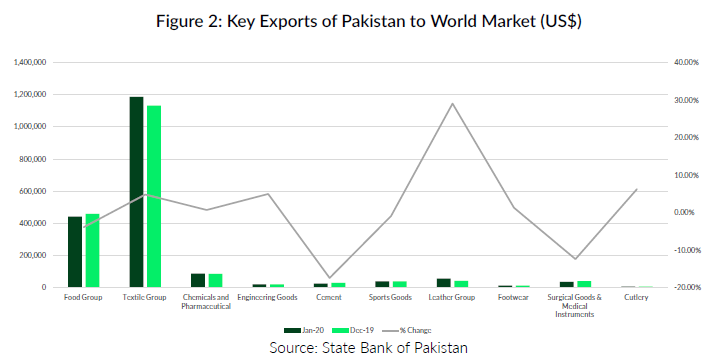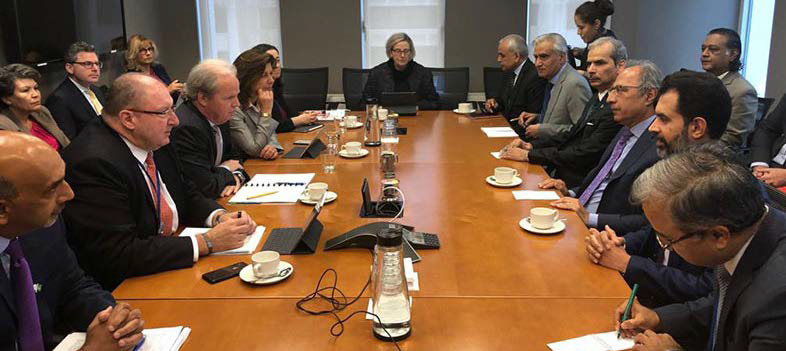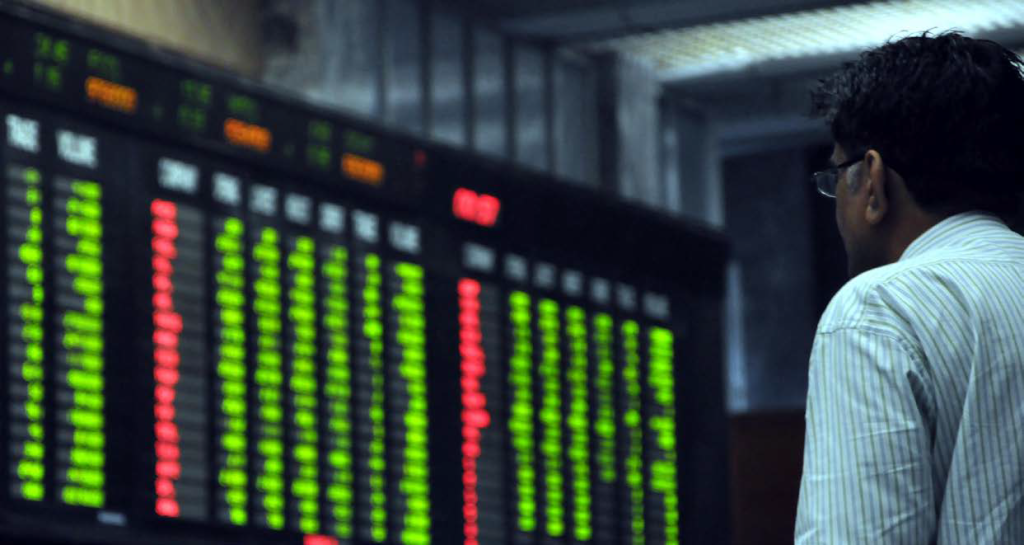The Coronavirus (COVID-19) has infected millions of people in more than 110 economies globally, as reported by the World Health Organization (WHO). The economic and financial consequences of the virus have been equally severe, resulting in unemployment, poverty and rising inequality. The pandemic has also reversed some of the significant gains achieved in female education and female labour force participation.
Pakistan’s economy has been developing slowly over the last two decades. As stated by the World Bank, annual per capita growth averaged only 2 percent, less than half of South Asia’s average, partially due to inconsistent macroeconomic strategies and unreliable investment and export opportunities. Short periods of rapid consumption-led growth frequently led to a sizable current account and fiscal deficits that eventually required policy tightening, leading to continuous boom and busts in the economy’s business cycle. From July 2019 to June 2020, with external and fiscal imbalances, the country entered into a 39-month International Monetary Fund (IMF)-Extended Fund Facility. The associated adjustment measures contributed to a reduction of the imbalances over the year.
However, like almost every economy, Pakistan’s economy suffered greatly in 2020. One of the leading economic indicators of a country’s well-being is its Gross Domestic Product (GDP). The GDP measures the total income of everyone in the economy and the total expenditure on the economy’s produced goods and services. Other measures of well-being correlated with GDP is the Human Development Index (HDI). The measures adopted to contain the adverse effects of the COVID-19 pandemic led to a severe contraction in economic activity during the final quarter of Fiscal Year 2020.
Consequently, the GDP growth contracted. The majority of the working population witnessed job or income losses, with unskilled workers, especially in the informal sector facing the major brunt of the pandemic in terms of enormous job losses. This also led to a rise in poverty in the fiscal year 2020 from 4.4 to 5.4 per cent (using the international poverty line of $1.90 PPP 2011 per day) while food insecurity also intensified. Hence, the government introduced a stimulus package equivalent to approximately 2.9 percent of GDP to alleviate the severe socioeconomic effects of the pandemic. The GDP growth rate for the fiscal year 2019–20 was –0.4 percent — the first time it became negative in almost seven decades.

From December 2019 to January 2020, Pakistan’s overall exports dropped by almost 3.45%, while the imports increased by 0.35%. The state of Pakistan’s imports and export statistics of major commodities to the world markets is given below in Figure 1 and Figure 2.


In February 2021, imports grew by nearly 11% to reach $4.62 billion, whereas exports reduced by nearly 3% to reach $2.07 billion. Market analysts expect the imports to remain at $4.5 to 5 billion and exports to stay at $2 billion during the remaining of the current fiscal year 2021.
‘’In February 2021, imports grew by nearly 11% to reach $4.62 billion“.
The Small & Medium Enterprises (SME) sector was also hit badly due to the pandemic. According to one estimate, the loss to the SME sector is projected to be around PKR 248 billion. It is foretold that if liquidity problems persist, unemployment, low productivity and supply-side issues shall intensify in SMEs. A prolonged pandemic may also set in an era of bankruptcies with the result that a broader financial meltdown could starve the real economy of credit, generating potentially severe issues for SMEs.
In terms of agriculture, crop production was relatively weak in the first half of FY21 because cotton production was severely affected due to floods. With the phased lifting of lockdown measures from May 2020 onwards, various industrial and services activities have recovered putting the laid-off workers in the informal sector back to work.
Although headline inflation in Pakistan fell during July-February FY21, it is still high at 8.3 percent on average, primarily due to food inflation. Compared to a deficit of US$2.0 billion from June to December 2019, the current account recorded a surplus of US$1.1 billion from June to December 2020, as robust official remittance inflows outweighed the more significant wider trade deficit. Both foreign direct investment (FDI) and portfolio investment inflows reduced during this time; however, a replenished current account supported a balance of payments surplus. The Pakistani Rupee also strengthened by 5.4 percent against the US dollar from June to December 2020. According to the Asian Development Bank, Pakistan’s economy is on the path to recovery, while the IMF has projected a 1 percent growth, albeit with high inflation and rising unemployment. According to most analysts, Pakistan’s economy is predicted to grow in 2022. However, as soon as the IMF programme restarts, additional austerity measures would diminish the government’s efforts to increase fiscal support.
The output growth is projected to increase and recover slowly over the next few years, averaging 2.2 percent over FY21-23. Sectors that hire disadvantaged people, for example, agriculture, are estimated to remain weak, pushing the threshold of poverty even higher. Exports are projected to grow from mid-2022 onwards. However, imports are also expected to rise because of a rise in oil prices.
Overall, the country is on the path to slow recovery. With better community mobility, consumption has increased, mainly due to a large inflow of remittances. Similarly, investment has also estimated to have slightly recovered. However, key potential problems for Pakistan in terms of the pandemic include the appearance of novel vaccine-resistant strains, hindrances in mass vaccinations and the effectiveness of vaccines. Also, any lags in implementing key reforms by the government could lead to more significant macroeconomic imbalances. A country’s standard of living depends on its ability to produce goods and services in a more significant number. Due to the pandemic, the overall productivity in the economy has taken a considerable dip. The productivity of a country can be measured in various ways, including capital and labour productivity. The production function is used to calculate the overall production and its effect on the economy, and it comprises technology, labour, capital, human capital, and natural resources. The overall production and growth of the economy have been hindered by the pandemic since there have been few investments, minimal research and development (R&D) activities, the labourers are only partially at work, and trade is adversely affected, which implies a leftwards shift on the production possibility frontier. This reduced production implies a reduction in the standard of living in a developing economy like Pakistan.


Additionally, a meagre 2% of the GDP in Pakistan is allocated for the public health sector, which is much lower than the worldwide average of 11.6% (as estimated by the World Health Organization in 2020). As hospitals are inundating with COVID-19 patients, Pakistan’s weak healthcare sector is struggling to cope. The country needs to take urgent steps to solidify the public health system. The vital measures include establishing new laboratories and importing ventilators and testing kits, and building private-public solid partnerships in the health sector.
Given the magnitude of the COVID-19 crisis investigating the impact on Pakistan’s private sector will also be vital in designing new policy measures to prevent widespread unemployment and loss of production. Policy measures that prevent permanent firm closures and further job losses will help meaningfully to sustaining the recovery. Other policies that can be considered include:
• Enhancing the private sector’s access to formal finance, particularly for SMEs,
• Streamlining administrative requirements to ease compliance costs, and
• Providing support to firms in building a digital presence and becoming technologically active.
• Giving strong protection to employees via social safety nets should be provided to the unemployed.
Finally, appropriate measures need to be enforced to boost the economy and focus on growth sectors in the next few years. There is a need to boost R&D to improve productivity. It is also essential to improve the investment climate for FDI, create jobs, especially for online workers and provide relevant technical skills to the labour force. It is also essential to invest in the health sector to curtail the damaging impact of the pandemic on the people.



